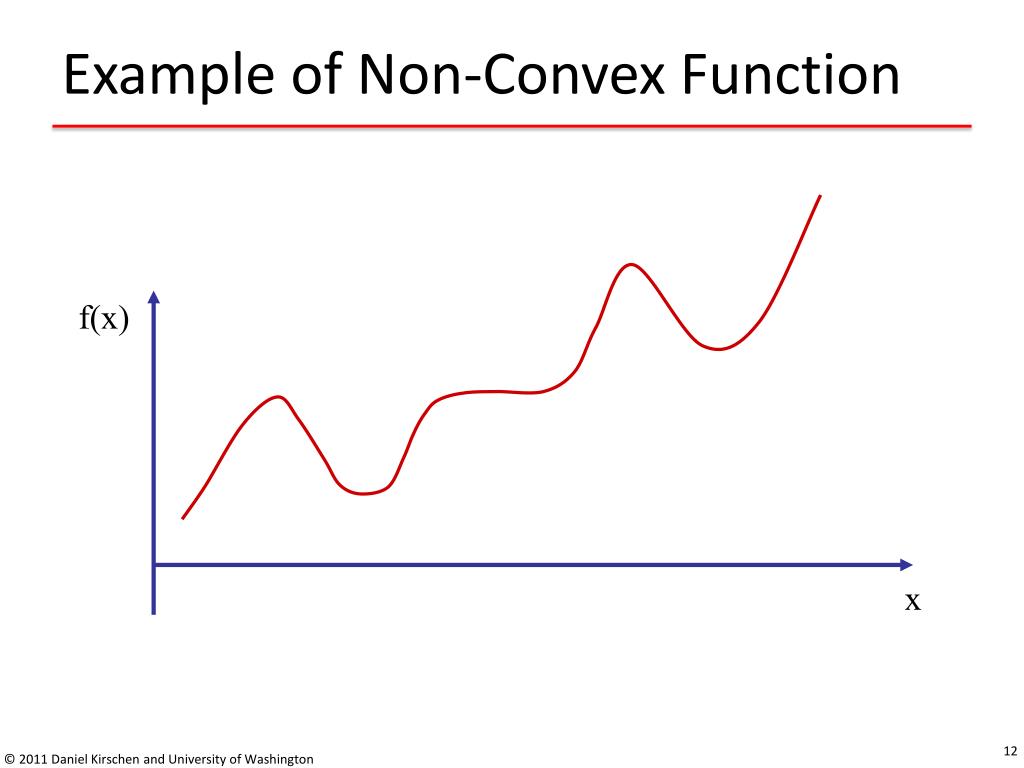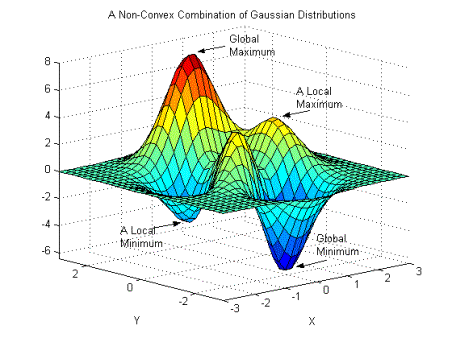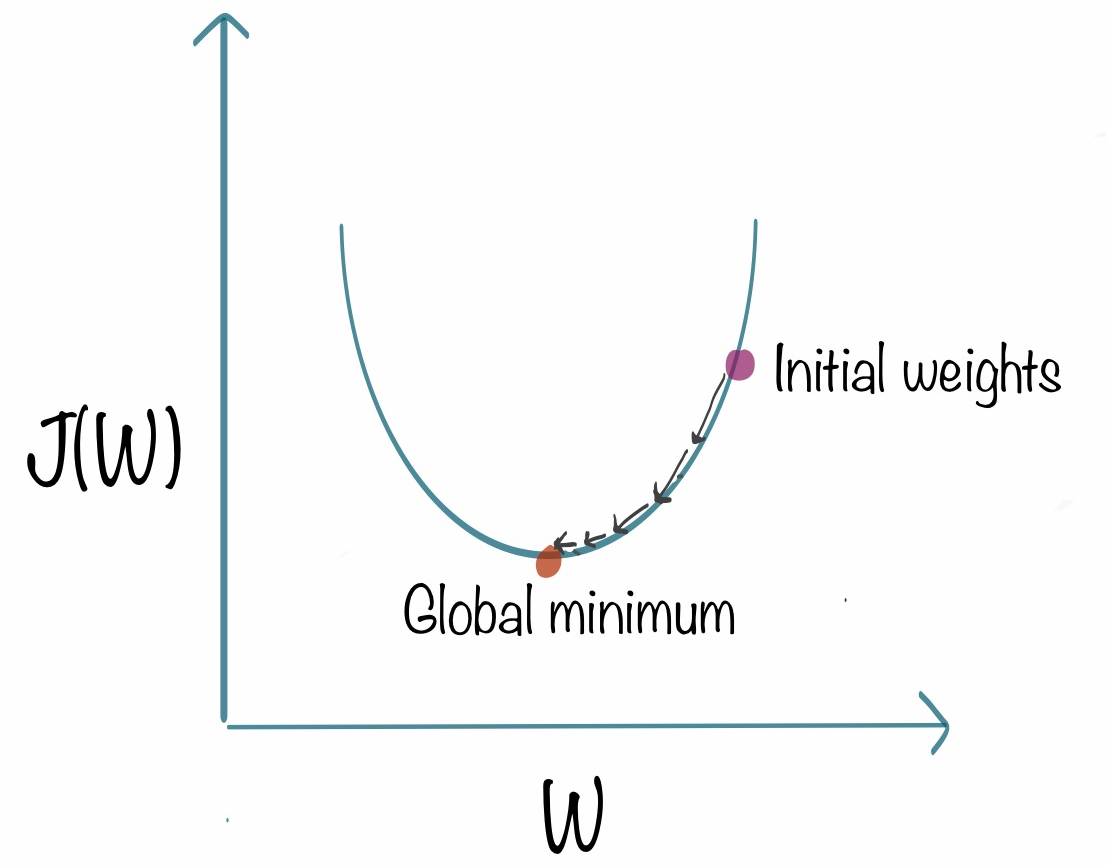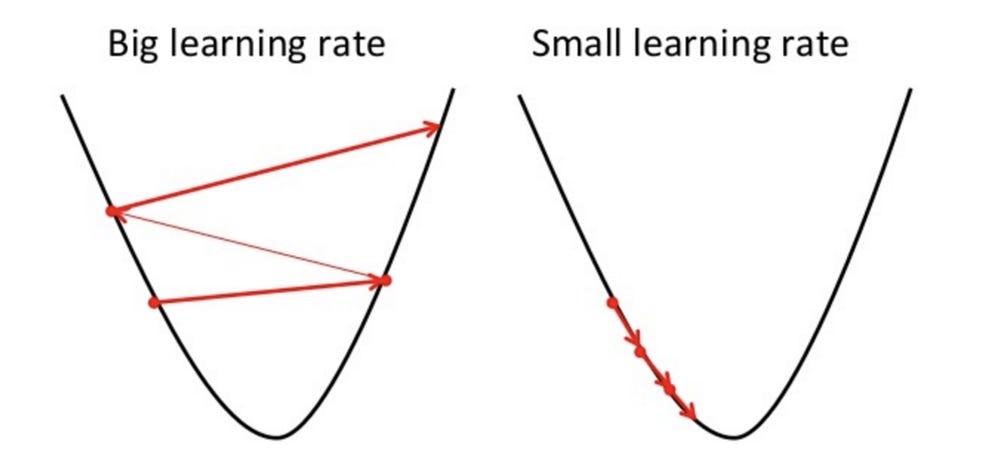su's
Gradient_Descent 본문
수치미분¶
def numerical_diff(f,x):
h = 1e-4 #0.0001
return (f(x+h) - f(x-h)) / (2*h) # 이부분을 채워주세요!
def function_1(x):
return 0.01*x**2 + 0.1*x
def tangent_line(f,x):
d = numerical_diff(f,x)
print(d)
y = f(x) - d*x # 이부분을 채워주세요!
return lambda t: d*t + y
import numpy as np
import matplotlib.pylab as plt
x = np.arange(0.0, 20.0, 0.1)
y = function_1(x)
plt.xlabel("x")
plt.ylabel("f(x)")
tf = tangent_line(function_1, 5)
y2 = tf(x)
plt.plot(x,y)
plt.plot(x,y2)
plt.show()
경사하강법(Gradient descent)¶
볼록함수(Convex Function)¶
어떤 지점에서 시작하더라도 최적값(손실함수가 최소로하는 점)에 도달할 수 있음
1-D Convex Function

출처: https://www.researchgate.net/figure/A-strictly-convex-function_fig5_3138210952-D Convex Function

출처: https://www.researchgate.net/figure/Sphere-function-D-2_fig8_275069197
비볼록함수(Non-Convex Function)¶
비볼록 함수는 시작점 위치에 따라 다른 최적값에 도달할 수 있음.
1-D Non-Convex Function

출처: https://www.slideserve.com/betha/local-and-global-optima
- 2-D Non-Convex Function

출처: https://commons.wikimedia.org/wiki/File:Non-Convex_Objective_Function.gif
경사하강법¶
미분과 기울기¶
- 스칼라를 벡터로 미분한 것
$\quad \frac{df(x)}{dx} = \lim_{\triangle x \to 0} \frac{f(x+\triangle x) - f(x)}{\triangle x}$¶

출처: https://ko.wikipedia.org/wiki/%EA%B8%B0%EC%9A%B8%EA%B8%B0_(%EB%B2%A1%ED%84%B0)
$\quad \triangledown f(x) = \left( \frac{\partial f}{\partial x_1}, \frac{\partial f}{\partial x_2},\ ... \ , \frac{\partial f}{\partial x_N} \right)$¶
- 변화가 있는 지점에서는 미분값이 존재하고, 변화가 없는 지점은 미분값이 0
- 미분값이 클수록 변화량이 크다는 의미
경사하강법의 과정¶
경사하강법은 한 스텝마다의 미분값에 따라 이동하는 방향을 결정
$f(x)$의 값이 변하지 않을 때까지 반복
## $\qquad x_n = x_{n-1} - \eta \frac{\partial f}{\partial x}$
- $\eta$ : 학습률(learning rate)
즉, 미분값이 0인 지점을 찾는 방법

출처: https://www.kdnuggets.com/2018/06/intuitive-introduction-gradient-descent.html
- 2-D 경사하강법

출처: https://gfycat.com/ko/angryinconsequentialdiplodocus
경사하강법 구현¶
$\quad f_1(x) = x^2$
# 손실함수 정의
def f1(x):
return x**2 # 이부분을 채워주세요!
# 손실함수를 미분한 값을 반환하는 함수 정의
def df_dx1(x):
return 2*x # 이부분을 채워주세요!
def gradient_descent(f, df_dx, init_x, learning_rate=0.01, step_num=100):
x = init_x
x_log, y_log = [x], [f(x)]
for i in range(step_num):
grad = df_dx(x)
x -= learning_rate * grad # 이부분을 채워주세요!
x_log.append(x)
y_log.append(f(x)) # x,y 값의 변화를 로그로 저장
return x_log, y_log
경사하강법 시각화¶
import matplotlib.pyplot as plt
import numpy as np
plt.style.use('seaborn-whitegrid')
x_init = 5
x_log, y_log = gradient_descent(f1, df_dx1, init_x=x_init) # 이부분을 채워주세요! # 위에서 정의한 f1과 df_dx1 을 매개변수로 사용하면 됩니다.
plt.scatter(x_log, y_log, color='red')
x = np.arange(-5, 5, 0.01)
plt.plot(x, f1(x))
plt.grid()
plt.show()
학습률(learning rate)¶
- 학습률 값은 적절히 지정해야 한다!
- 너무 크면 발산하고, 너무 작으면 학습이 잘 되지 않는다.
 출처: https://mc.ai/an-introduction-to-gradient-descent-algorithm/
출처: https://mc.ai/an-introduction-to-gradient-descent-algorithm/
'STUDY > 머신러닝 딥러닝' 카테고리의 다른 글
| Perceptron (0) | 2021.03.27 |
|---|
